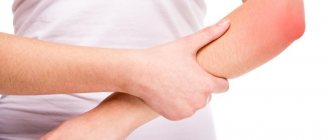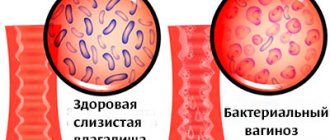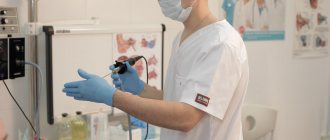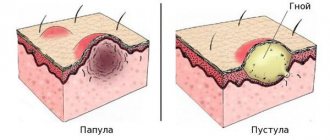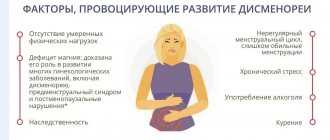Among the pathologies of the large intestine, dolichosigma (enlarged sigmoid colon) can be considered as a variant of dolichocolon, accompanied by an increase and expansion of one or all sections.
The main manifestation of the disease is severe constipation, which a person has to struggle with throughout his life. Treatment of intestinal dolichosigma in adults is not complete without a strict diet, laxatives and stimulants, massage, and exercise therapy. Still, a common outcome is fecal impaction and obstruction, so surgery cannot be avoided.
The essence of intestinal pathology
The elongated sigmoid colon forms additional loops, twists, and expands significantly. Normally, its task is to accumulate feces, absorb water and prepare for pushing into the rectum and further defecation. The average size of a sigma in an adult is: length 54–55 cm (some authors consider the maximum norm to be 46 cm), width up to 4 cm.
It lies inside the peritoneum and has its own mesentery. Projected onto the left iliac region of the abdomen. It differs from other sections in its S-shaped direction and the presence of two bends. In some people, moderate lengthening is asymptomatic. It is not considered an intestinal pathology, but is classified as a physiological abnormality.
With dolichosigma in adults, the intestine forms one or several additional loops; such a structural disorder makes it difficult for the passage of feces
Treatment of intestinal dolichosigoma in children
The success of therapy will depend on how timely the pathology is detected. Treatment always begins with the use of conservative methods; only if they are ineffective, the question of the advisability of surgery is raised. As an additional method of influence, compositions based on medicinal herbs can be used. Before using them, you should consult your doctor.
The main goals of therapeutic intervention:
- restoration of normal consistency of stool;
- restoration of normal frequency of bowel movements;
- elimination of acute inflammation;
- restoring the process in a natural way.
Parents should remember that products with laxative effects should be replaced with analogues. This condition will reduce the risk of the patient’s body becoming accustomed to the medication.
Treatment of such a condition in a child necessarily requires adherence to a diet. Basic dietary recommendations for patients can be presented as follows:
- fluid consumption in large quantities;
- refusal of cereals;
- refusal of meat;
- introduction of fish into the diet;
- refusal of tea;
- consumption of fermented milk products;
- refusal of whole milk;
- limiting the amount of sweets consumed.
Parents should remember that it is important to follow a diet. Attention should be paid to the fact that certain vitamins may not be in the child’s menu during the course of exposure. therefore, consuming a separate complex appropriate for the child’s age will be beneficial.
Causes
Why the disease is diagnosed in some people in early childhood, and in others many years later, remains unclear. Dolichosigma in adults begins to appear by the age of 50, and in children it is usually detected at 4 years. This may be due to long-term individual compensatory adaptation of the intestine. Or in childhood there is a congenital disease, and in adults acquired factors are more important.
Disorders of the intestinal structure in the embryonic period are influenced by:
- any infectious diseases of the expectant mother (bacterial, viral) that occurred during pregnancy;
- the use of drugs with a negative effect on the fetus to treat a woman;
- disturbances in the diet of a pregnant woman (lack of fruits and vegetables, meat, preservatives, pesticides, dyes entering the bloodstream with food);
- hereditary predisposition, the presence of similar anomalies in the father’s or mother’s family;
- living of a pregnant woman in an environmentally unfavorable zone;
- transferred stressful conditions.
Elongation of the sigmoid colon in an adult can cause various disturbances in the process of food digestion, which leads to fermentation and rotting of residues. Meaning:
- sedentary lifestyle;
- overeating and obesity;
- previous intestinal infections;
- prolonged unrest and neuroses inhibit peristalsis;
- chronic inflammatory diseases of the upper digestive tract (esophagitis, gastritis, peptic ulcer, gastroduodenitis, hepatitis, cholecystitis, pancreatitis, chronic colitis) cause general digestive failure due to an excess or deficiency of secreted secretions, enzymes, bile acids, as a result the balance of the intestinal flora is disrupted, the process suffers digestion of food, stagnation and fermentation in the large intestine occur;
- the state of immunodeficiency caused by various diseases contributes to infection and dysregulation of the intestines.
What symptoms indicate dolichosigma?
Symptoms of dolichosigma are caused by stagnation of waste substances in the intestine, their fermentation and transformation into toxic poisons, with gradual poisoning of the body, intestinal bloating in the sigma zone, and the development of partial or complete obstruction.
Symptoms of intestinal diverticulosis
Patients consult a doctor with complaints of the following:
- Constipation - at first, bowel movements are delayed for 3-4 days, then this period reaches up to a month. The symptom is caused not only by lengthening the path of feces, but also by careless treatment with addiction to laxatives and enemas. A person’s reflex mechanism for cleansing the intestines disappears.
- Pain syndrome - caused by a distended, overcrowded sigmoid colon, associated with inflammation. Localized in the navel or left half of the abdomen. It is persistent and sometimes turns into spasms (when feces move). Feces hardened to a stone-like state damage the intestinal mucosa and “open the gate” for the introduction of pathological flora and intestinal inflammation (colitis).
Due to putrefactive fermentation, the gases released by the patient further distend the intestines and have a pungent and unpleasant odor.
A person is bothered by constant bloating
An admixture of blood is found in the stool after defecation, which confirms vascular injury. Increased symptoms are provoked by eating, walking, and physical activity. Improvement occurs only after stool is removed.
Prevention
Preventive measures include proper and varied nutrition. It is necessary to include more vegetables and fruits, fermented milk products, and liquid soups in the diet. It is recommended to develop a routine and eat food at the same time. Don't forget about water balance by drinking 8-10 glasses of water or herbal tea a day.
Moderate physical activity, morning jogging or regular visits to the gym can also be a good prevention. You need to try to lead an active lifestyle and teach your children to do it.
People prone to diseases of the gastrointestinal tract benefit from rest in sanatoriums, as well as regular examinations by a therapist, gastroenterologist or surgeon.
What complications does dolichosigma cause?
Stretching of the intestinal wall contributes to its thinning; rupture is possible with the release of feces into the abdominal cavity and peritonitis. Then the pains after sharp “dagger” pains develop into constant ones, spread throughout the entire abdomen, the temperature rises, blood pressure drops to the point of shock, and intoxication increases.
Dysbacteriosis causes irritable bowel syndrome and vitamin deficiencies. Anemia (anemia) develops in the absence of synthesis of essential vitamins in the intestines. Chronic colitis and acute intestinal obstruction appear - caused by fecal stones, kinks, and torsions of the elongated intestine.
Stages of the disease, their manifestations
Gastroenterologists distinguish between forms of the disease or stages of the disease, since one form/stage can progress to another, more severe one. Each is characterized by symptoms of a certain intensity.
Compressed or initial (hidden) - usually patients are not aware of the existing intestinal pathology and do not feel any unusual manifestations. The only complaint is a tendency to constipation (no bowel movement for up to five days). During the examination, the doctor pays attention to the palpable solid intestine in the left iliac region. Switching to a diet and using mild laxatives helps normalize bowel movements.
Subcompensated - expressed in longer-term constipation, abdominal pain, bloating, lack of effect from laxatives, mandatory use of cleansing enemas. Patients develop signs of intoxication (weakness, headaches, irritability, insomnia, nausea).
Decompensated - the condition worsens, periodic vomiting is added to nausea and loss of appetite. Headaches become frequent, weakness is caused by the development of anemia. Skin manifestations in the form of increased pallor and the spread of pustules are added. Siphon enemas are used to cleanse the intestines. You can read about the characteristics of the disease in childhood in this article.
Treatment of intestinal dolichosigoma in adults
Treatment of such pathology in children and adults involves not only drug intervention. To achieve the best results in therapy, you need to pay attention to diet and following a daily routine. Drug treatment offered to adult patients includes various laxatives and the use of special rectal suppositories. The therapeutic course also includes taking immunomodulators and vitamins.
Painkillers and antispasmodics are mandatory. The purpose of compounds that facilitate the process of removing gases from the intestines is shown. It is equally important to perform light physical exercise; the patient will benefit from physical procedures, especially electrophoresis. The patient should also become familiar with simple abdominal massage techniques - this technique allows you to get rid of the feeling of heaviness that appears after eating. In some cases, when therapeutic intervention does not restore the patency of the loops, it is recommended to consider the possibility of surgical intervention.
Surgical intervention is recommended in the following cases:
- traditional methods of influence do not allow obtaining the desired results;
- manifestation of acute intoxication of the body;
- obstruction of intestinal patency;
- pressing one part of the tube into another, forming a kind of stocking;
- formation of fecal stones;
- adhesions.
Before performing an operation, the doctor must exclude the possibility that the patient has contraindications to the procedure. Patients should pay attention to the fact that surgical intervention does not completely eliminate the risk of developing the disease in the patient. In some cases, this method of treatment turns out to be ineffective.
How are intestinal diseases diagnosed?
Diagnosis begins with an examination by a doctor. The doctor pays attention to the patient’s pale skin, nervousness, and bloating. Palpation reveals a painful compaction in the area of the sigmoid colon. It could be a fecal impaction or a tumor.
A rectal examination reveals an empty rectal ampulla. This means that there are reasons above that impede the passage of feces. X-ray examination is carried out by preliminary ingestion of a barium suspension or by direct injection of a contrast agent into the intestine with an enema (irrigoscopy).
Upon admission with a drink, the doctor on the first day has the opportunity to examine the esophagus, duodenum and stomach condition. On the second day, the contrast should fill the loops of the colon. Fluoroscopy reveals: intestinal prolapse (colonoptosis), contrast retention in the area of the descending and sigmoid intestines, additional loops and elongation of the sigmoid.
The doctor makes a differential diagnosis with another congenital anomaly - megacolon. The disease is accompanied by an enlargement of the entire large intestine with thickening of individual areas, which causes a narrowing of the passage.
Irrigography of the intestine is performed immediately after the enema
Computed tomography makes it possible to determine not only the size and patency of the sigmoid colon, but also the condition of the mucous membrane, to distinguish dolichosigma from neoplasms and polyps that often affect this area. Ultrasound of the intestines reveals dense fecal stones, the method is not of great importance, since the picture is blurred due to a significant amount of gases.
For diagnosis, the following tests are important: blood - leukocytosis and ESR indicate inflammation, a decrease in red blood cells and hemoglobin - anemia, in a stool analysis it is important to identify hidden bleeding (Gregersen reaction), signs of parasites in the intestines, dysbiosis. Electromyography and sphincterometry are used to determine motor activity and the possibility of intestinal motility.
Diagnosis of dolichosigma
The main method for diagnosing an elongated intestine is irrigography - an X-ray examination of the rectum and colon (with the exception of newborns). A contrast agent is used: a mixture of barium, which is injected into the intestine.
An effective diagnostic method is colonoscopy. The procedure allows you to assess the condition of the walls of the colon using endoscopic equipment. During the procedure, a biopsy is performed for further histological examination.
Using ultrasound of the abdominal organs, rings, additions, extensions, as well as other anatomical features of the intestine can be identified. The procedure is painless and safe for newborns.
Mandatory examinations for long intestines:
- general blood and urine analysis - allows you to determine the inflammatory process, the degree of intoxication of the body and determine the causative agent of the infection;
- biochemical blood test - determines the characteristics of metabolism, identifying affected organs;
- fecal occult blood test - determines pathologies of internal organs (bleeding in the intestines or stomach);
- coprogram - makes it possible to assess the degree of digestion of food.
If necessary, a stool test for I/g and dysbacteriosis is prescribed. The disease must be differentiated from cholecystitis and pancreatitis.
How to be treated without surgery?
At the stage of compensation and subcompensation, therapy involves a strict diet, massage, exercise therapy, and the use of folk recommendations.
Diet
Nutrition of a patient with intestinal dolichosigma requires:
- mandatory transition to frequent (fractional) meals in small portions (5–6 times a day);
- reduction in the diet of light carbohydrates (sweets, baked goods, wheat bread, pasta);
- increasing the proportion of fiber;
- limited meat consumption;
- refusal of millet and rice porridges that are difficult to digest in the intestines;
- daily provision of fluid of at least 1.5–2 liters, drinking warm mineral waters containing sulfur;
- prepare dishes only boiled or steamed; fried, smoked and spicy foods irritate the intestines, inhibit intestinal motility, and are poorly digested.
It is recommended to include in the intestinal diet:
- bread made from wholemeal flour, with bran, rye;
- sour milk products (kefir, yogurt, yogurt, cottage cheese);
- from sweets - honey, marmalade (contains pectins, beneficial for the intestines);
- fiber-rich vegetables, fruits, berries, herbs;
- products with a laxative effect (boiled beets, dried apricots, prunes, vegetable oils);
- bran - not only have laxative properties, but also remove toxic substances and waste from the body (act as sorbents), they should be added to kefir and porridge.
Vegetable oils you can use are olive, sunflower, flaxseed and milk thistle oil. They are used to dress salads; it is recommended to drink a glass of kefir with a tablespoon of oil at night or take it on an empty stomach.
Using massage
Daily abdominal massage helps to relax spasmodic areas of the intestine, increase tone in the absence of peristaltic waves, and increase blood flow to stretched muscles. Thus, congestion is eliminated and feces are promoted.
The main thing is to carry out all movements clockwise. Intestinal massage begins with light stroking and rubbing to warm up the surface layers of the skin. The stomach should turn red. Further, the movements become deeper, squeezing, pressing.
Kneading is the main method of deep impact, but it should only be used after preliminary preparation. The muscle layer of the abdominal wall is grasped and kneaded with the fingertips. The movements push the muscles towards the rectum and last 15 minutes.
The end of the procedure takes place in reverse stages (rubbing, stroking). At the very end, you can do a light tapping or patting. It is better to learn how to do it yourself after taking a course from an experienced specialist.
Physiotherapy
For chronic constipation caused by dolichosigma, exercises are carried out with intense load, the number of repetitions is recommended to be increased weekly by 10. Jumping in place, alternating with both legs and each. Using a jump rope is useful. The rhythm should reach 150 per minute. Squats with the pelvis pulled back and the back straight. In the lower position, you need to hold the pose first for 10 seconds, then reach up to a minute.
To complicate the exercise, it is recommended to place your feet at a considerable width and spread your toes as far apart as possible.
Exercises for the intestines are performed while lying down. The upper abdominal muscles can be made to work by doing hands-free raises. The lower ones are maximally loaded when lifting the legs and performing “scissors” and “bicycles” at an angle of 45 degrees to the floor.
People's recommendations
Treatment of the intestines with folk remedies is best done after consulting a doctor and in combination with other methods. Castor oil - it is recommended to take it at night with kefir or warm beer (a tablespoon per glass of drink), during the day you can add it to coffee. Cannot be used by pregnant women.
Instead of castor oil at night, you can drink any vegetable oil with kefir. Cucumber pickle without seasoning contains beneficial properties for the intestines; you can drink it during the day. The following parts of plants have a laxative effect:
- buckthorn bark;
- senna leaves;
- Dill seeds.
They should be brewed in a thermos and left overnight. Take half a glass over the next day. Can be mixed.
Drug treatment
If the above remedies do not help, and the pain is excruciating, then doctors prescribe medications that stimulate bowel movements. Duphalac - an adult can take 3-4 times a day.
Mukofalk - a bag of powder is poured into a glass of water and mixed well; no more than four standard bags can be consumed per day. Duspatalin - tablets or capsules are taken 20 minutes before meals, the drug should be washed down with a significant amount of water. Trimedat - most often prescribed to stimulate intestinal receptors in the postoperative period, it can be administered rectally.
Forlax is a mild laxative.
Drugs that normalize the intestinal flora (probiotics) are prescribed to combat and prevent the processes of fermentation, putrefaction, and candidiasis in dolichosigma. You can choose from the most popular products (Lactobacterin, Simbiter, Bifidum); yoghurts indicating the inclusion of a bacterial starter for the intestines are useful.
Due to the development of vitamin deficiency, combination preparations of vitamins are added to treatment; C, A, B, PP, D are especially useful. In case of severe intestinal atony, a solution of Prozerin is administered. The drug should be used with caution in elderly people.
Enemas
To cleanse and stimulate bowel movements, enemas are prescribed. They are made with boiled water, saline solutions, and herbal decoctions. It is important to prevent the intestines from getting used to this method of removing contents. Loss of the reflex leads to complete atony, disappearance of the urge to defecate, and malfunction of the sphincters. Another complication is the development of irritable bowel syndrome.
Treatment of the disease
Treatment of dolichosigma in children is aimed at normalizing peristalsis, intestinal motility and restoring microflora. In some cases, laxatives (macrogol) and microenemas are used. Antispasmodics are prescribed for spastic pain.
The need for surgery is rare. The operation is performed in the following cases:
- intestinal obstruction;
- acute constipation;
- the presence of unstraightened loops and kinks of the intestine;
- if conservative treatment was unsuccessful.
Children are prescribed medications with a mild laxative effect (contain lactulose). The dosage is calculated by the doctor individually, depending on the age and body weight of the child. This approach allows you to achieve the formation of non-compacted and regular stools.
A necessary condition for successful treatment of dolichosigma is adherence to a special diet:
- products rich in fiber and vegetable oils are recommended;
- you need to exclude all types of food that cause constipation (boiled potatoes, semolina, pasta, bread, canned meat, cookies).
The diet of patients with dolichosigma should also contain the maximum amount of minerals, vitamins and fiber (banana, green onions, cabbage, tomatoes, green apples, grapes). Cereals are an essential component of the diet. In order to recover as quickly as possible, you should completely avoid products that contain dyes and preservatives. All these elements only aggravate the pathology.
If conservative therapy is ineffective, chronic intoxication occurs and obstruction of the colon develops. The pain syndrome cannot be suppressed. In this case, surgery is required.
The operation is carried out urgently. The procedure is chosen by the surgeon based on the results of instrumental and laboratory studies. The nature of the surgical intervention depends on the severity of dolichosigma, as well as on the shape and area of localization.
When is surgery indicated?
In the absence of results from conservative treatment of the intestine, in the stage of decompensation, when atony and obstruction occur, the only treatment option is surgery. During surgery the following is performed:
- resection (excision) of part of the long sigmoid colon;
- removal of necrotic walls due to torsion and compression;
- Less commonly, the entire sigmoid colon has to be removed.
The ends of the intestinal loops are sewn together using one of the most suitable methods
Typically, an uncomplicated operation lasts 1.5 hours; general anesthesia is required. In the postoperative period, on the third day you are allowed to get up and walk a little. Antibacterial therapy and detoxification are required, and bleeding is prevented. After 10 days, the patient is discharged.
The patient must follow a diet until peristalsis is completely restored and further limit foods that are not recommended for the intestines. A disease such as dolichosigma is not difficult to diagnose. But further treatment is more difficult the more advanced the intestinal pathology. Therefore, doctors do not recommend enduring constipation. It is necessary to establish the cause and obtain optimal recommendations.
When treating dolichosigma without surgery, doctors try by all means to normalize the passage of feces and establish peristalsis. If these attempts are unsuccessful, only as a last resort do they resort to resection of part of this same sigmoid colon. It is sometimes shortened by 40-80 cm in order to remove non-viable parts of the intestine and prevent further complications!
But even operated patients will ALWAYS have to watch their diet and follow rules to maintain normal digestion.
How is it diagnosed?
Often, when patients complain about problems with stool or regular constipation, I advise doing a colonoscopy.
Another study that can help in diagnosing Dolichosigma is Irrigography (when a series of X-rays are taken after taking a suspension with a radiopaque substance (barium)). The images taken at certain intervals show how the contrast passes through the intestines, filling it. And changes in the gastrointestinal tract, including the sigmoid colon, are visualized.
Another gentle way to see dolichocolon is virtual colonography (a three-dimensional image of the intestinal structure using a tomograph).
The diagnosis is also made/confirmed during surgery (intraoperative morphometry).
And so, after the diagnosis of Dolichosigma was established. What to do?
Treatment: step by step
- Adjust your diet. Here millions of pages of information from the Internet and social networks about the prevention of constipation will come to the rescue. Same fiber, dairy products, more green vegetables.
- Physical activity. It regulates peristalsis (contraction of the intestinal walls) and helps relieve constipation.
- More water. 1.5 liters per day (2.0 liters or more with increased physical activity and high air temperatures).
- Physiotherapy – electrical stimulation of the intestines, acupuncture.
- Enemas - according to indications (not often).
- Medications are a regular treatment to prevent constipation. Tablets to stimulate intestinal motility (as prescribed by a doctor) and remedies for constipation. Not all drugs can be used for a long time (for example, if you abuse tablets with Senna extract (Senade), you can get intestinal melanosis). And drugs that stimulate peristalsis through activation of the muscles of the intestinal wall, when used for a long time, can lead to a decrease in the independent activity of the intestine, that is, without the “whip” it will contract weakly (tablets with Trimebutine, etc.).
In cases of chronic constipation, it is recommended to use weak but safe medications for long-term use - the shell of plantain oval seeds (Psyllium). There are several drugs with this component (Mukofalk, Fitomucil, Entofit, Isfagula, Fibralax). Mucofalk is registered as a medicine, the rest as dietary supplements. There is no big difference between them - choose what suits the price and design. This drug is also approved for people with diabetes; it has few side effects. What, for example, cannot be said about another common remedy with Lactulose - people with diabetes cannot use it, it causes bloating in many, so we use Lactulose as a short-term way to combat constipation. According to indications, painkillers and antispasmodics can be used.
If non-surgical treatment methods for Dolichosigma did not help?
Surgical methods are used for complications of dolichocolon - intestinal obstruction. They begin with attempts to restore intestinal patency (use of antispasmodics, painkillers, enemas). They resort to endoscopic detorsion (straightening the intestines using an endoscope). If the obstruction persists, if there is a threat of intestinal ischemia, only as a last resort, resection (removal of part of the intestine) is performed.
The consequences of dolichosigma - chronic constipation - directly contribute to the appearance of proctological problems. If they appear, you should consult a proctologist. Disruption of bowel movements causes hemorrhoidal disease and anal fissures. Because dense feces injure the mucous membrane in the anus. Frequent straining when going to the toilet also causes hemorrhoids to enlarge. Treatment of hemorrhoids and anal fissures by a proctologist takes place in parallel with the correction of the underlying disease - Dolichosigma. In most cases, the prognosis is favorable.
Initial appointment with copoproctologist D.V. Bogdanov at the Doctor Prof clinic - check the price and schedule by phone.
Reviews
Galina, 58 years old, housewife: I have known about my diagnosis for 5 years. Previously, I had to work hard at a construction site. At 89 years old, my mother has severe intestinal atony. We take turns drinking castor oil and kefir. Helps.
Nelya, 45 years old, doctor: Constipation in old people sometimes becomes the main problem, and then the heart hurts and melancholy sets in. Whether there is dolichosigma there or not is unclear, because they do not want to be examined. The listed laxatives are a bit expensive for retirement. They agree to a diet for the intestines and herbal medicine.
Vera, 42 years old, technologist: You just need to not bring yourself to such a state. And adults are responsible for the intestines of children; there is no point in letting them watch advertisements for all sorts of chips. Does anyone actually check it for health risks?

